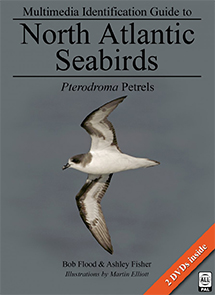Weekly birding round-up: 10-16 Aug 2016
The week continued the recent pattern and remained in a light westerly airflow. It was, however, a rather different picture at either end of the country - persistently wet in western Scotland but correspondingly dry and sunny in the Southeast.
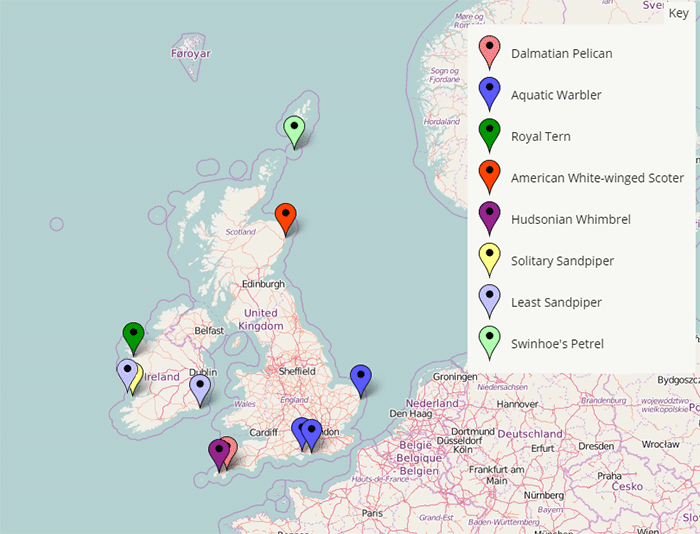
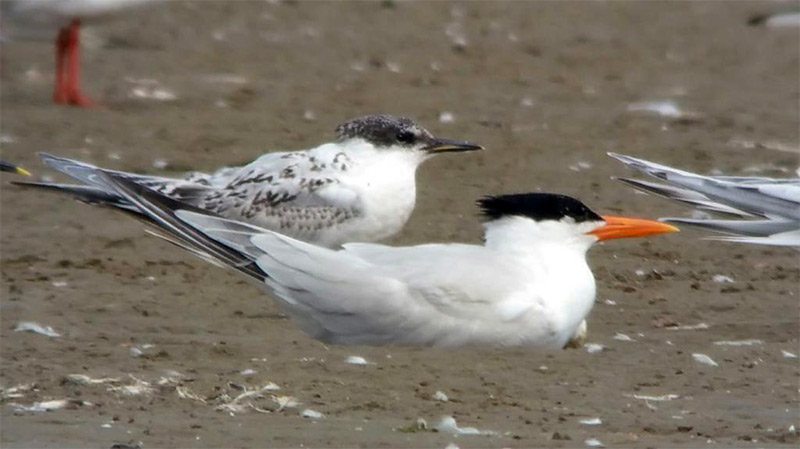
The early autumn pre-passerine season traditionally promises terns, seabirds and waders, and this week delivered quality birds in all three categories. The best of these came on the last afternoon of the period - a Royal Tern in the far west of Ireland at Roonagh Lough, near Louisburgh, Co Mayo - about as far west as you can get. Initially reported as a Caspian Tern, it was soon reidentified as something significantly better. It lingered into the late evening, apparently showing well, and the first online photo showed a stunning looking beast indeed, still (surprisingly) in full summer plumage. Most Royal Terns are supposed to have moulted into their white-foreheaded non-breeding plumage as early as June so the appearance of this bird is certainly unusual (though Olsen and Larsson’s 1995 ‘Terns of Europe and North America’ suggests that failed breeders may retain breeding plumage for longer).
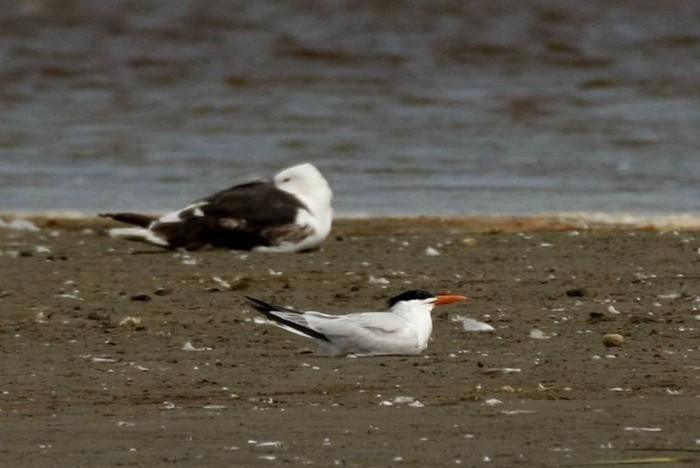
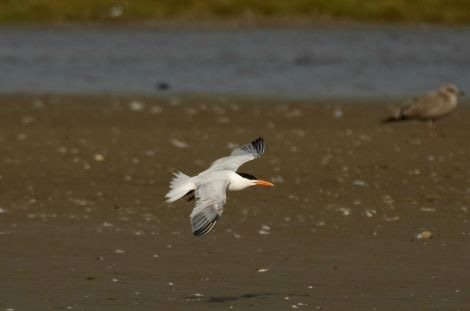
Royal Tern is of course a major rarity, this being only the second for Ireland, following a bird at Clonakilty, Cork on 7th June 2009, this individual then presumably crossing the Irish Sea to appear at Porth Ceiriad, Abersoch, Black Rock Sands and Llandudno, all Gwynedd, between 15th and 20th June. The history of this species in Britain has always been (and remains) a controversial one but the currently accepted previous records are few indeed - St. Ives, Cornwall in 1971, Kenfig, Glamorgan in 1979, Mumbles, Glamorgan in 1987 and Thorntonloch and Musselburgh, both Lothian, in 1999. This has been a very difficult species to catch up with, both the Lothian and Welsh birds giving their would-be observers something of a runaround, so if this new bird lingers it may prove very popular.
Whether this is an American or African Royal Tern remains to be seen but in the event of any future taxonomic juggling it will be an important distinction. The two taxa differ in both structure and plumage (as well as living on opposite sides of the Atlantic) and may well represent a future split. It is tempting to think that the appearance of this bird is closer to the American form (certainly its bill appears quite stout) and also to link its appearance with the simultaneous arrival of American waders but of course guesses based on single photos are dangerous and the arrival with American waders may just be a coincidence. If the bird remains into next week’s review period, this will all no doubt become a little clearer.
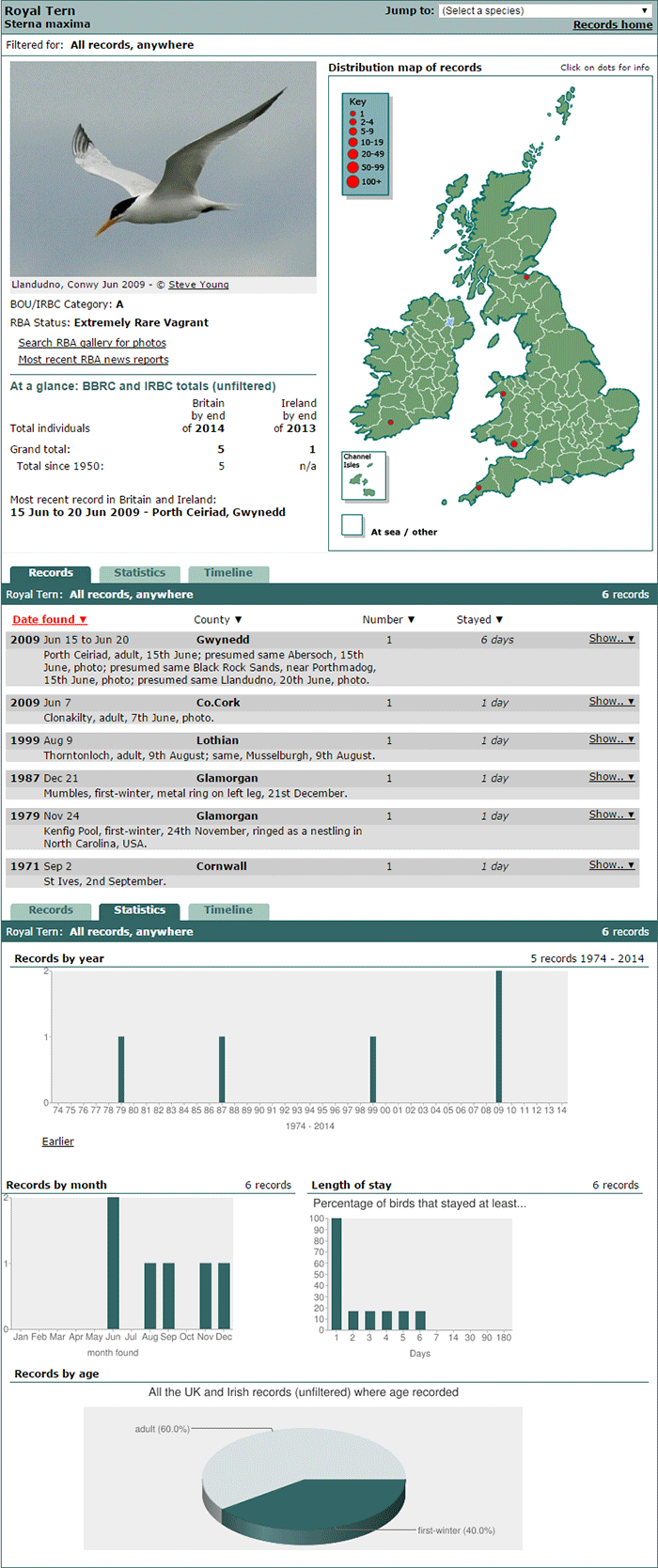
Equally surprising news this week was the breakfast-time revelation on 14th that a Swinhoe’s Petrel had been trapped at 0230 on Fair Isle. Bearing a ring, it was quickly established to be the first of two birds caught in 2013 (on 27th July). It was then trapped again at 0350 on 15th.
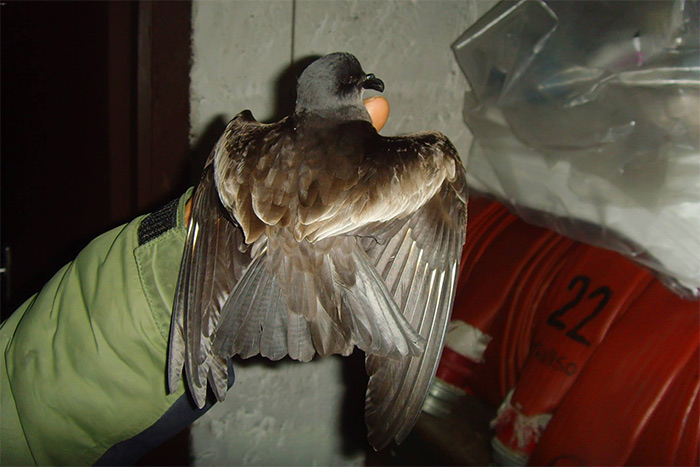
The story of Swinhoe’s Petrel in Britain and Ireland has been fascinating indeed. The first for the North Atlantic was heard, then trapped, on the Selvagens, Madeira in 1983 (and then retrapped in 2007!) but the first accepted record for Britain and Ireland was a bird off Bridges of Ross, Clare on 15th August 1985. However (‘Chalice Petrel’ controversy aside) the species really hit the headlines with a series of trappings of three initially unidentified large dark-rumped petrels at Tynemouth, Northumberland between 1989 and 1994. Others were trapped on Great Skellig, Kerry and at Cove, Aberdeenshire in 2000 and one was seen south of St. Mary’s, Isles of Scilly in 2005 but since 2013 the spotlight has fallen on Fair Isle where two birds were trapped that year, one of which was subsequently retrapped and returned the following year for further trappings. There was, however, no sign of it in 2015 and the trail was thought to have gone cold. Now comes the astonishing reappearance of the species and the equally astonishing news that this week’s bird isn’t the returner from 2014 but the original (and subsequently unrecorded) 2013 bird. One can only wonder where it has been in the meantime and how far it might have travelled.
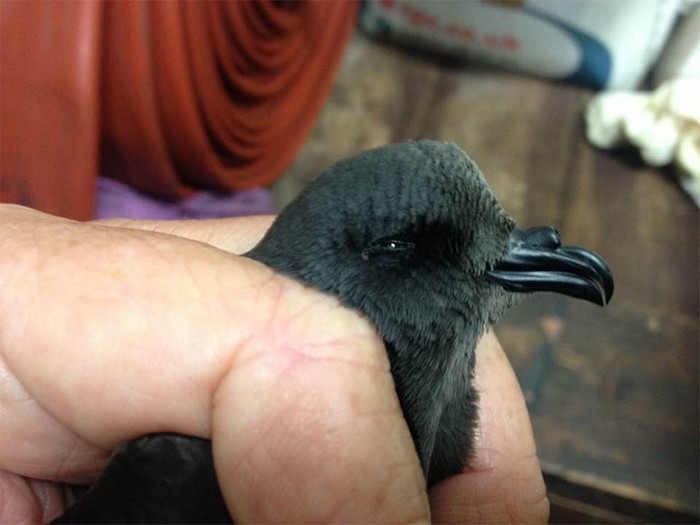
The full story of this species is a long way from being fully elucidated. Its mysterious and unpredictable nocturnal appearances surely indicate a North Atlantic (and perhaps also British) breeding population. To date, away from Britain, birds have also been trapped on Madeira and the Canaries and in France, Spain, Portugal, Italy and Norway, with accepted ‘at sea’ sight records off Madeira, Portugal, the Cape Verdes, the Azores and even multiple times off North Carolina, United States. For a seabird whose main range lies in the Pacific - in Russia, China, Taiwan, Korea and Japan - this is an astonishing and as yet unexplained state of affairs.
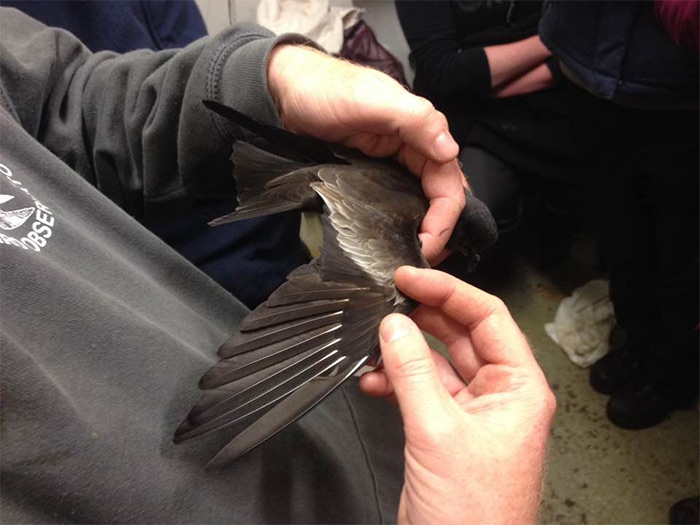
Much better documented is the European status of the week’s other highlight - Aquatic Warbler . One of these striped delights was trapped at Titchfield Haven, Hampshire on 13th - with another reported briefly at Lowestoft, Suffolk the same day - and then another was photographed and subsequently identified at Pagham, West Sussex on 16th. Once upon a time this species would hardly have merited a mention in the headlines. The classic ‘Scarce Migrant Birds in Britain and Ireland’ (Sharrock 1974) describes it as a regular autumn migrant. It averaged more than nine per year in the book’s review period of 1968-67 but then experienced an upsurge in the early to mid-1970s with no fewer than 60 in 1972 and an astonishing 93 in 1976. Records dipped thereafter, with several years producing fewer than twenty (described as ‘poor’ in the years’ BBRC Reports) but nevertheless the species was dropped from the BBRC List in 1982. Since then, however, despite more and more observers and no decline in mist-netting effort (the traditional means of discovery), Aquatic Warblers have continued to decline steadily and today the species is, with every justification, back on the BBRC Rarities List.
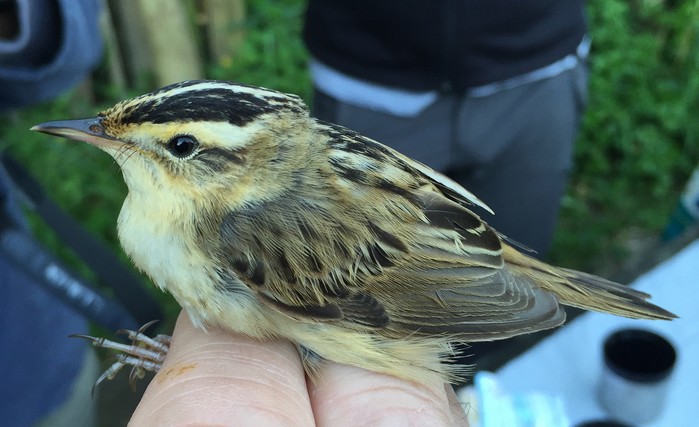
It is now a very difficult species to catch up with and a high proportion of records still refer to trapped birds so for today’s generation of twitchers this is a valuable prize indeed. Finding one has become an even more difficult task. The traditional occurrence pattern still holds, however, for Britain was always (and remains) on the fringe of a south-westerly migration through the Netherlands, Belgium and France. Records here peak in late August and early September and are almost exclusively along the south coast as far west as the Isles of Scilly (although East Anglian occurrences used to be more frequent).
The main reason for its decline is clearly the species’ increasingly unfavourable conservation status – it is now Europe’s rarest migrant breeding passerine. Once widespread and numerous in fen mires and wet meadows throughout Europe, the Aquatic Warbler has disappeared from most of its former range. It formerly bred in France, Belgium, the Netherlands, West Germany, Czechoslovakia, Yugoslavia, Austria and Italy but became extinct in western Europe during the twentieth century and has declined dramatically in central Europe. Today it breeds only in Germany, Poland, Hungary, Lithuania, Latvia, Belarus, Ukraine and Russia. Its world population of only 12-14,000 pairs is confined to fewer than forty sites, with four of these supporting over 80% of the world population.
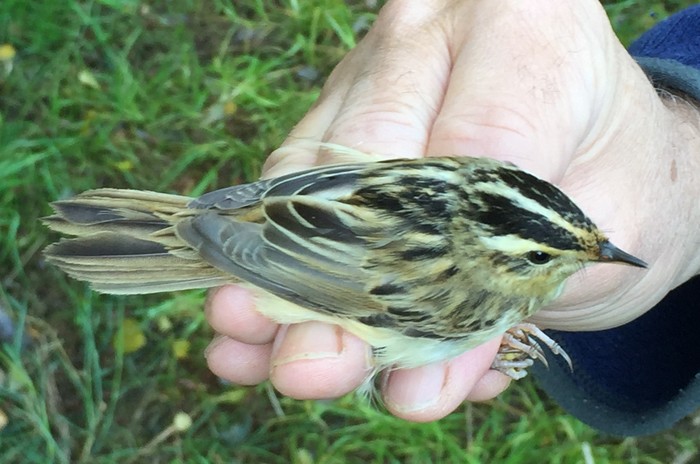
The winter quarters were long shrouded in mystery but are now known to lie in West Africa south of the Sahara, an important site being the Senegal Delta (Djoudj National Park and the grass marshes near Tiguet). It probably also winters in the wetlands and floodplains of Mauritania and Mali where there are several winter records.
The rarest new wader of the week was in Ireland - a Solitary Sandpiper new in from the Atlantic at Loop Head, Clare on 15th and still present next day. Always rare (only 37 have previously reached Britain), this species remains a good find - indeed it has been a personal favourite since it provided my first major rarity discovery (then only the eighteenth for Britain) on St. Mary’s, Isles of Scilly in the fabulous bird-filled September of 1983. This week’s bird represents only the seventh for Ireland, the last being in Wexford in 2014, and is the first for County Clare. September is the peak month but records in August are not unusual.
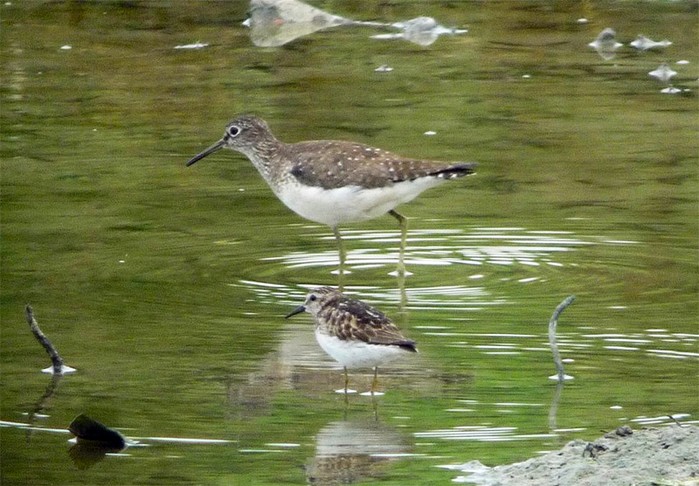
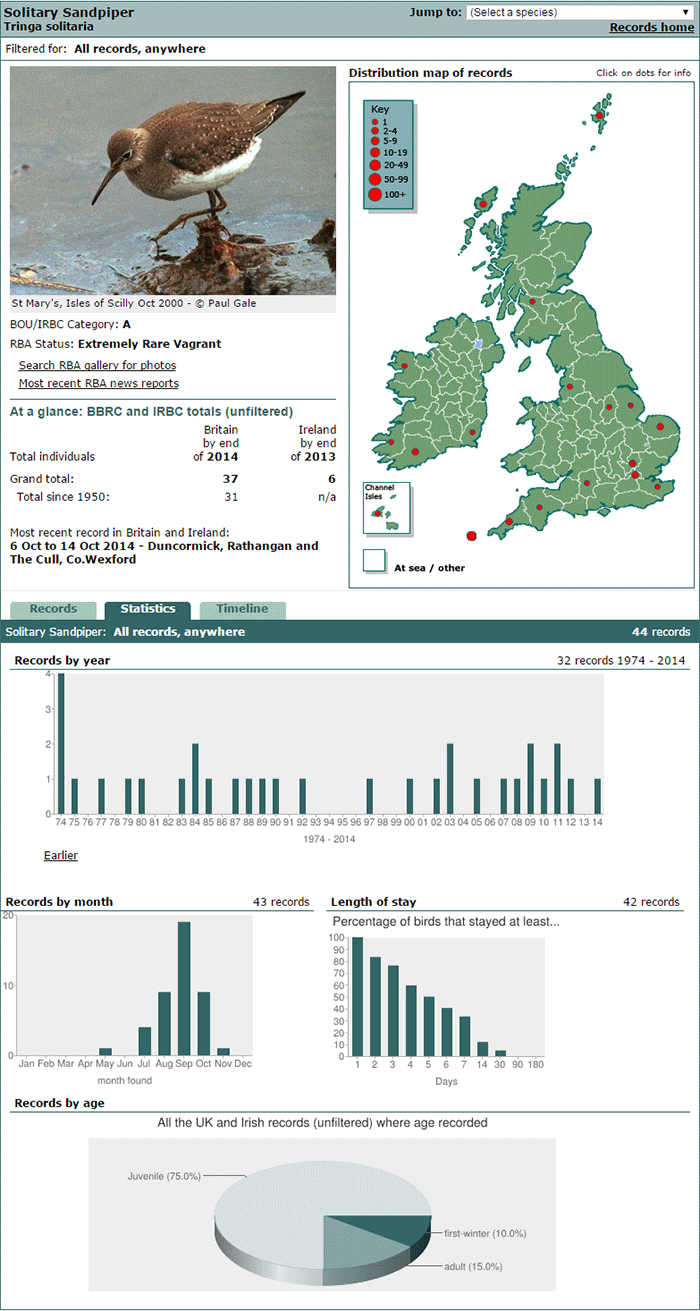
Almost all the really rare waders of the season have so far been at Tacumshin, Wexford. It was therefore perhaps only fitting that this site also hosted a Least Sandpiper on 13th, firmly cementing its claim to be the vagrant wader capital not just of Ireland but of the whole of Europe. This was the second for the site (one was there on 8th to 14th October 2011) and only the third for Wexford (one was at Lady’s Island Lake on 17th September 1978).
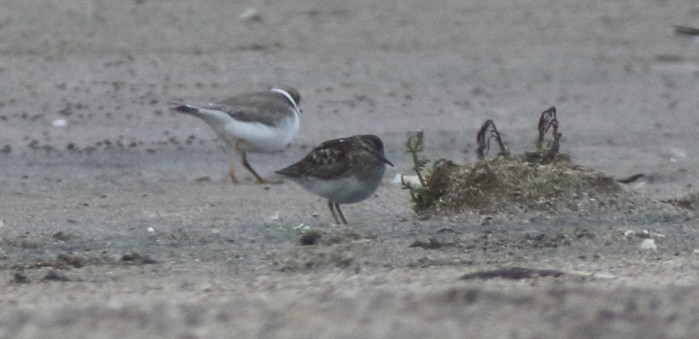
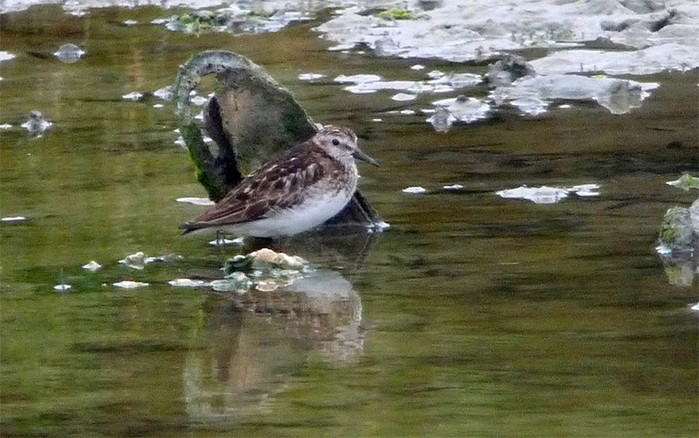
Then, miraculously, came news of another on 15th, this time also at Loop Head, Clare along with the Solitary Sandpiper (and apparently present the previous day too). It was still there next day. This has now been an exceptional autumn for Least Sandpipers, with two in Britain, two in Ireland and another in France.
Our now-familiar trio of mega-rare lingerers - the drake American White-winged Scoter off Murcar, Aberdeenshire, the Hudsonian Whimbrel at Perranuthnoe, Cornwall and the Dalmatian Pelican at Restronguet Creek, Cornwall - all remained in situ this week.
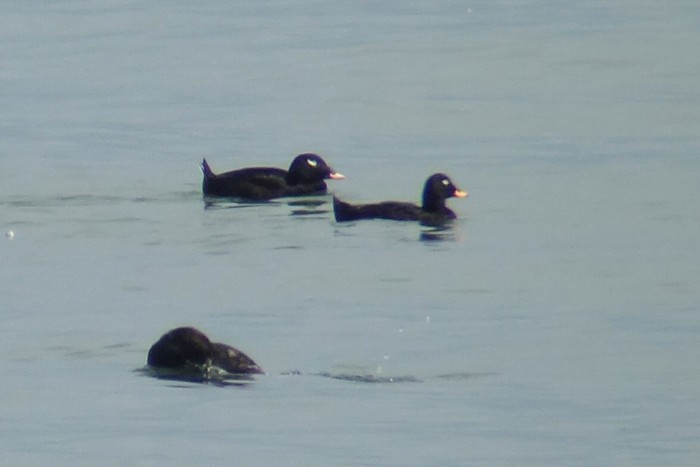
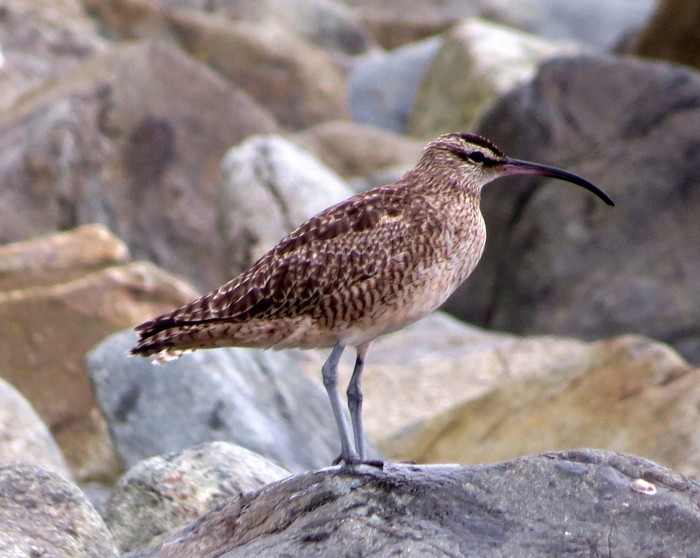
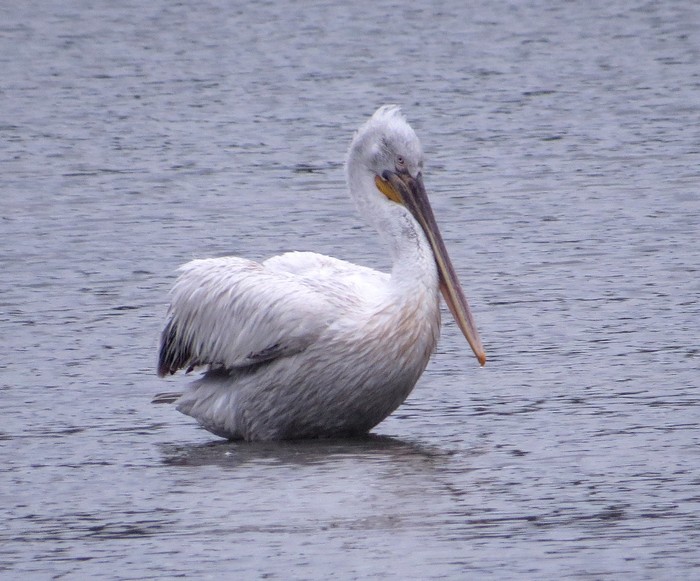
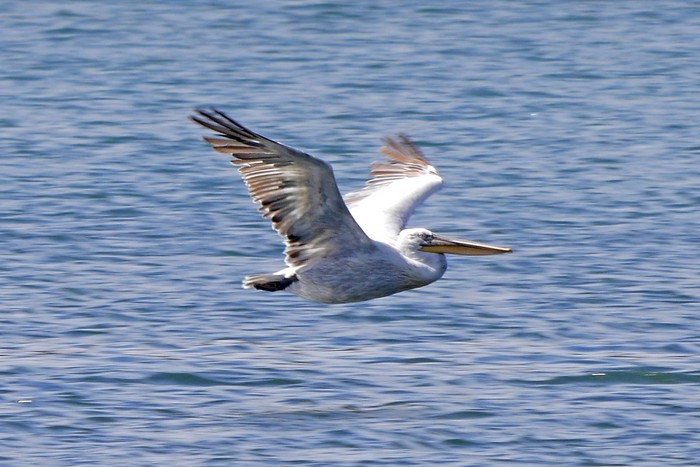
This week’s ‘Euronews’ features up to nine pairs of Red-billed Tropicbirds on the Canary Islands and an unringed Demoiselle Crane in Poland. Most attention in Britain was, however, grabbed by the publication of a long-awaited genetic study which confirmed the occurrence of multiple Elegant Terns in Europe, including an apparently pure breeding pair. In a nutshell, the birds which look like Elegant Terns are indeed pure Elegant Terns whilst the known hybrids look like hybrids.
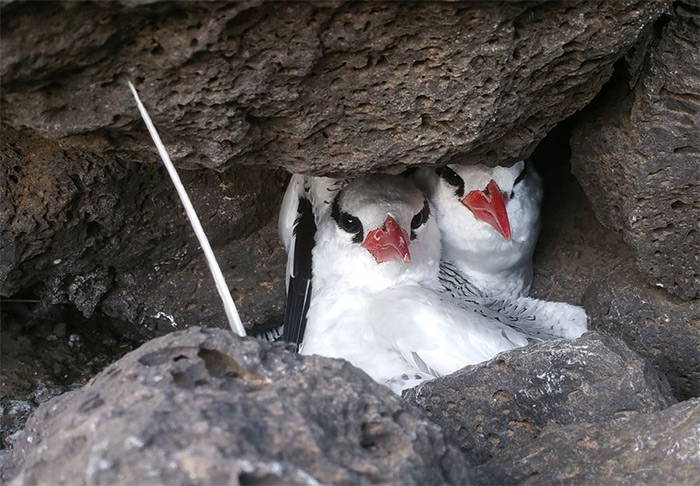
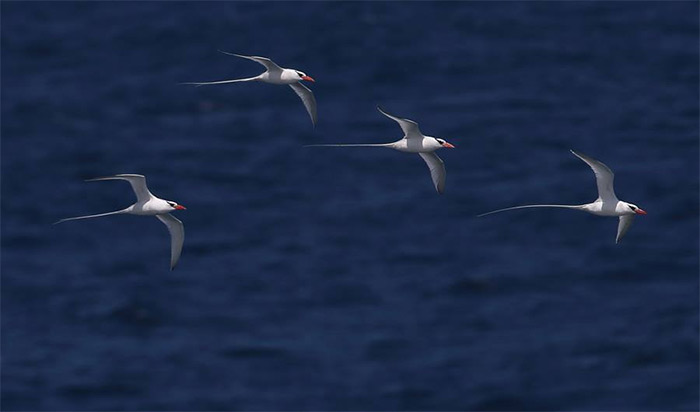
Away from Fair Isle this was a quiet week for seabirds. The best were Wilson’s Petrels with birds off Porthgwarra, Cornwall on 12th, off Scilly pelagics on 12th and (two) on 13th, two off a pelagic out of Baltimore, Cork on 14th and one off a pelagic off Kerry on 16th. Also worthy of top billing, however, was an unseasonal White-billed Diver drifting south off Blackdog, Aberdeenshire on the evening of 14th.
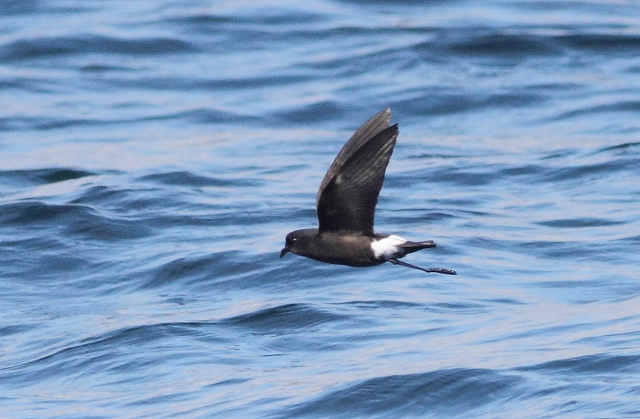
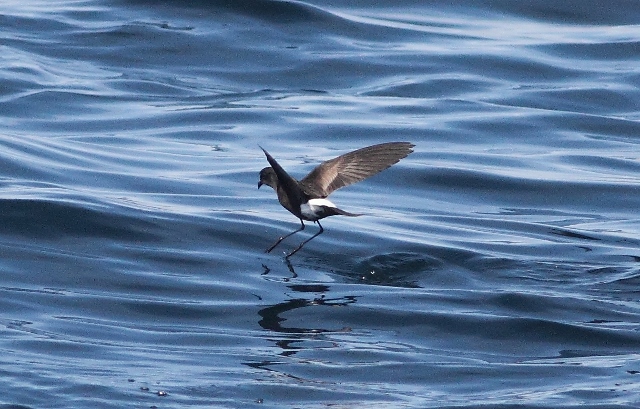
Great Shearwaters were very few with just two off Cape Cornwall on 10th, one off Pendeen, also Cornwall, on 11th, singles off Ram Head, Waterford and Galley Head, Cork on 12th, two off a Scilly pelagic on 13th, one off the Baltimore pelagic on 14th and three off the Kerry pelagic on 16th. Cory’s Shearwaters were even rarer with just singles off Galley Head and Toe Head, both Cork, on 12th. Away from the Southwest, two Balearic Shearwaters were off Flamborough Head, Yorkshire on 10th, three off Corsewall Point, Dumfries and Galloway on 12th, one off Whitburn, Durham on 15th and one off Sheringham, Norfolk and two off Chapel Point, Lincolnshire on 16th.
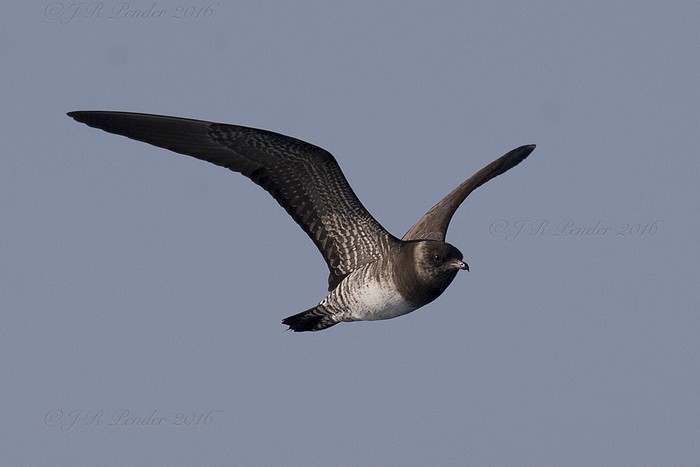
Long-tailed Skuas were off Whitburn, Durham on 10th, Weston, Hampshire on 11th and off a Scilly pelagic on 15th with Pomarine Skuas represented by singles off Bempton, Yorkshire on 10th, Cape Clear, Cork on 12th, three off Tarbat Ness, Highland on 13th, one off Spurn, Yorkshire on 14th and one off Chapel Point, Lincolnshire on 16th. Finally, a pristine adult Sabine’s Gull was seen from the Scilly pelagic on 13th with others at Easington, Yorkshire on 14th and Skye, Highland on 16th.
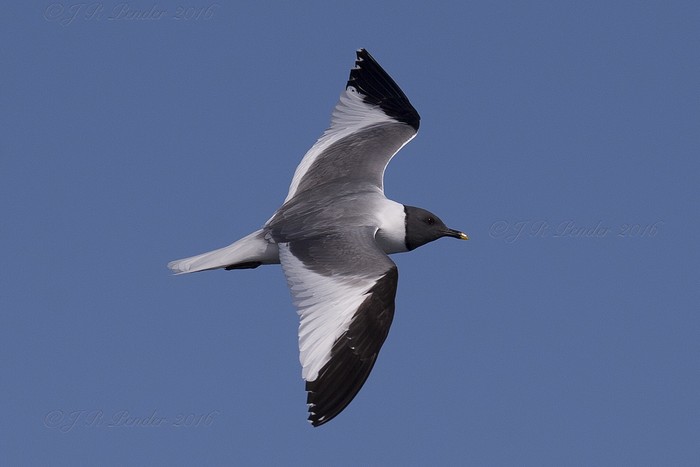
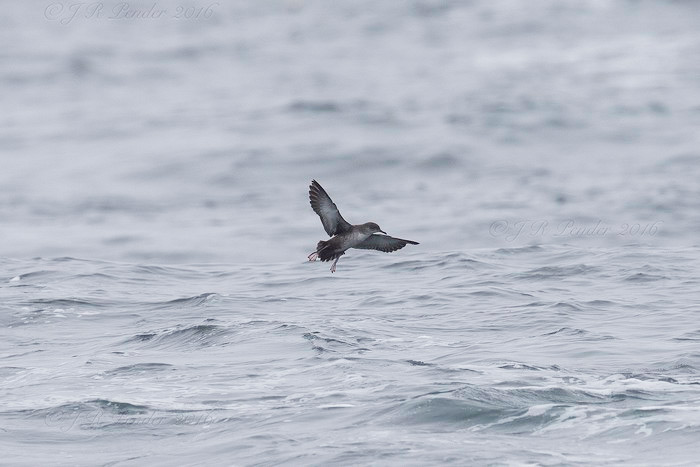
The Surf Scoter remained off Murcar, Aberdeenshire all week but new birds included a drake Ring-necked Duck on Mainland Orkney on 14th and a drake Ferruginous Duck at Cotswold Water Park, Wiltshire on 15th.
Away from the Southeast and the Midlands, outlier Great White Egrets included singles still at Conwy RSPB, Conwy and Willington Gravel Pits, Derbyshire and two at Dryslwyn, Camarthenshire. Up to four were at Rutland Water, Leicestershire. Single Cattle Egrets remained at Marshside, Merseyside all week and at Tacumshin, Wexford to at least 14th.
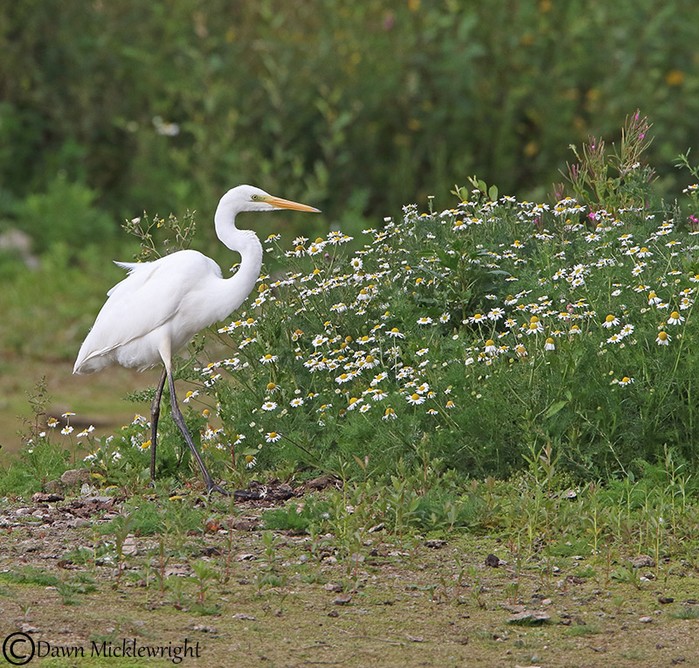
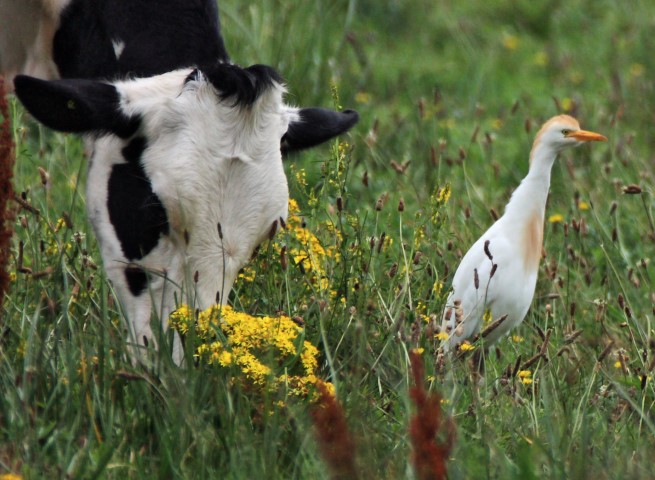
The Purple Heron was at Otmoor, Oxfordshire to 16th with others at Bawdsey, Suffolk on 14th and Reculver, Kent on 15th. Less expected was a Night Heron in a garden in Nuneaton, Warwickshire on 13th.
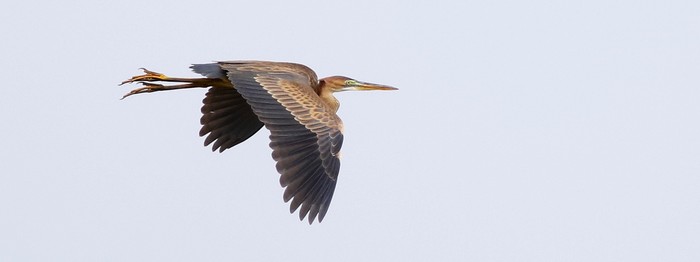
Glossy Ibises remained in traditional haunts - Bowers Marsh, Vange Marsh and Fingringhoe, Essex, Llanelli, Camarthenshire, the Rogerstown Estuary, Dublin, Ham Wall, Somerset (two), Newington, Nottinghamshire, Sandy, Bedfordshire, Austerfield, South Yorkshire, King George V Reservoir, London and Grove Gerry, Kent.
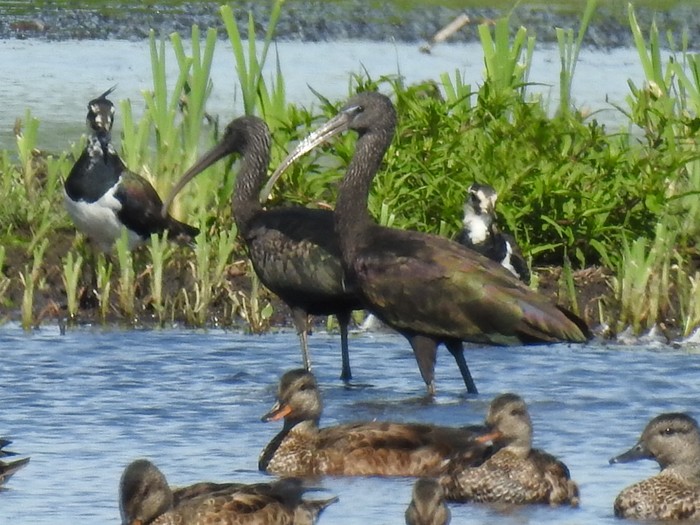
The only White Stork reports of the week came from Hampton Bishop, Herefordshire on 13th and Baddesley Common, Hampshire on 16th whilst the high Spoonbill counts continued with 27 at Titchwell, Norfolk, 24 at Stiffkey Fen, also Norfolk, 19 at Aldeburgh, Suffolk, 14 at Alkborough Flats, Lincolnshire and 12 at Burton Mere, Cheshire and Wirral.
The only rare raptor was a Black Kite near Waterrville, Kerry on 15th. Scarce raptors included up to two Honey-buzzards still in the Minsmere and Walberswick area , Suffolk with singles at Grove Ferry and Teynham, both Kent, on 11th, Staincross, South Yorkshire on 13th, Lakenheath Fen, Suffolk, Barton in Fabis, Nottinghamshire and Strathpeffer, Highland on 14th and Sheringham, Norfolk, Selsdon Wood, London and Moor Green, Berkshire on 15th. Montagu’s Harriers were near Blacktoft, Yorkshire on 10th, near Snettisham, Norfolk on 11th and on Mersea Island, Essex and near Ashford, Kent on 14th, the latter report involving a roosting bird carrying a satellite transmitter. The following day it was in France.
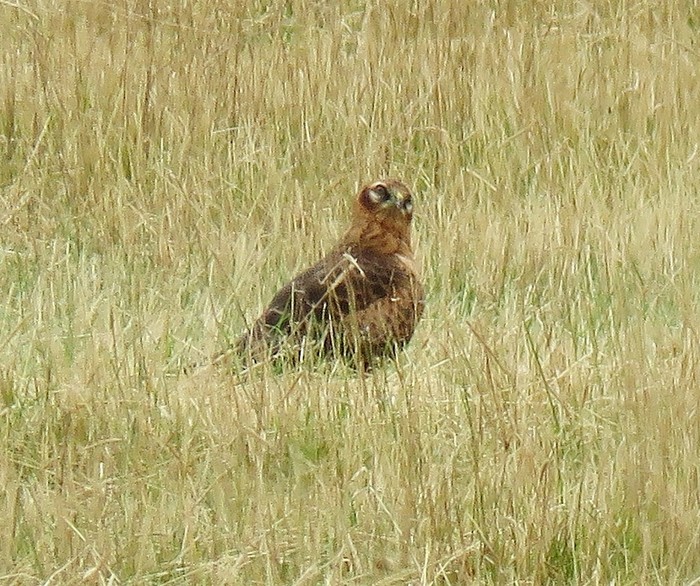
The only Spotted Crakes of the week were at Cliffe Pools, Kent on 14th and North Cave, Yorkshire on 16th.
American arrivals dominated the wader news. Last week’s Semipalmated Sandpiper was reported to be still at Dale, Pembrokeshire on 10th but the news was soon of new birds, with, in addition to the already mentioned headline birds, Ireland hosting most of the action.
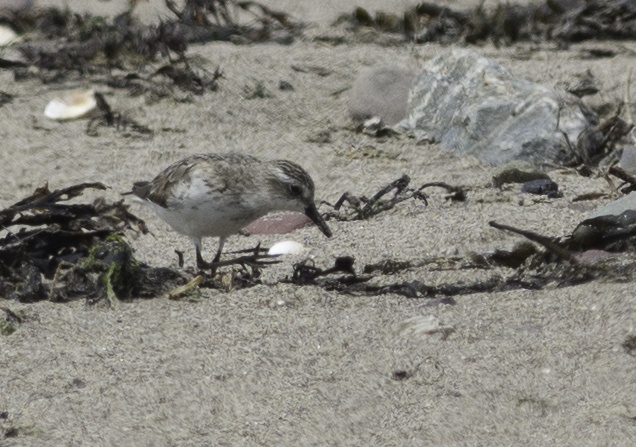
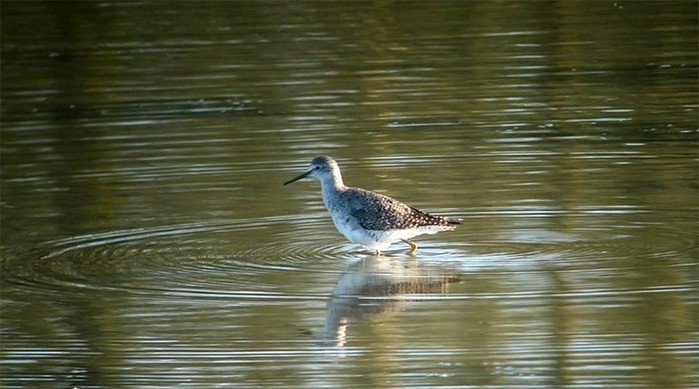
Last week’s White-rumped Sandpiper was still at Belfast Lough to at least 11th but new arrivals were just around the corner. First were a Lesser Yellowlegs on the Swords Estuary, Dublin on 11th (still there on 15th) and an American Golden Plover at Tacumshin, Wexford on 12th, the latter adding to the ever-growing tally of rare waders at this awesome site. On 15th the pace of new arrivals picked up further with two more Lesser Yellowlegs (at Ring Marsh, Wexford and Clonakilty, Cork - this latter bird still present next day) and a Buff-breasted Sandpiper at Portnoo, Donegal.
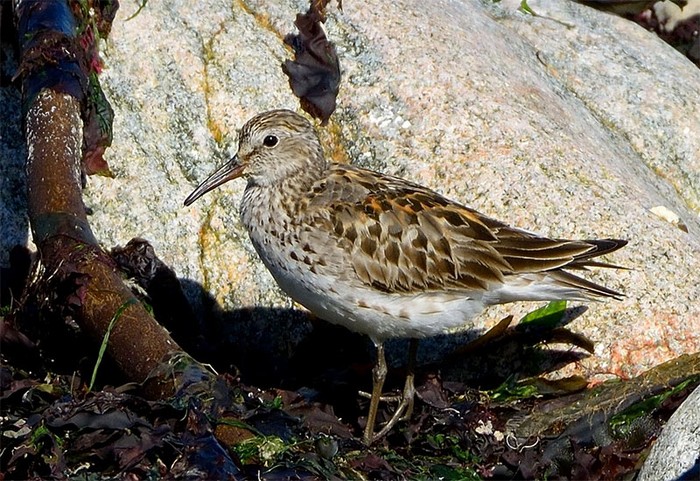
In Britain, by contrast, the story was almost exclusively of Spotted Sandpipers . Last week’s bird remained at South Efford Marsh, Devon to at least 14th whilst the bird seen briefly at Hauxley last week resurfaced on 12th and was still there to at least 15th also. Even more exciting, however, was a pristine juvenile on Tiree, Argyll on 14th and 16th and then, on 15th, came news of one at Dunbar, Lothian, still present next day. Otherwise, a very obliging White-rumped Sandpiper frequented the car park at Girdle Ness, Aberdeenshire on 10th to 16th.
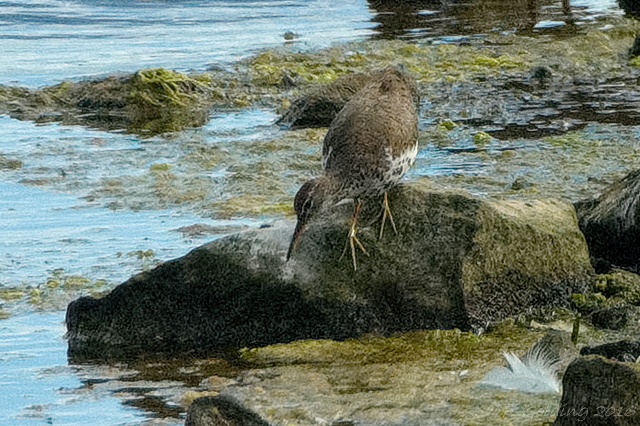
Pectoral Sandpipers showed a strikingly different pattern much more indicative of a Siberian origin. As last week, all were in the east - at Loch of Strathbeg, Aberdeenshire to 10th, the Ouse Washes, Cambridgeshire and Freiston Shore, Lincolnshire to 11th, Potter Heigham, Norfolk on 11th to 13th, Minsmere, Suffolk on 14th, Tophill Low, Yorkshire on 15th to 16th and Shapwick Heath, Somerset on 16th.
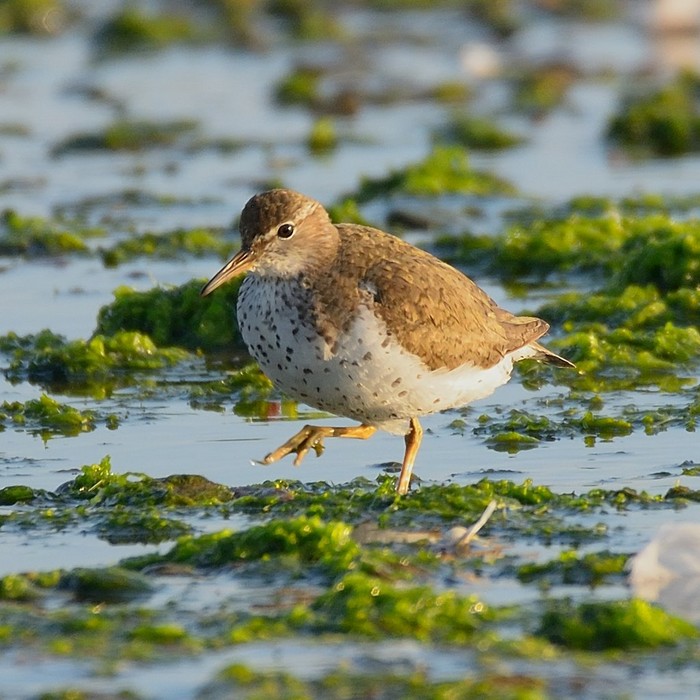
A pratincole sp. seen briefly at West Canvey Marsh RSPB, Essex on 13th sadly didn’t linger and could not be identified. Otherwise the best Palearctic wader was an adult Pacific Golden Plover adding to the fun at Tacumshin, Wexford on 14th. Also a good find was a Kentish Plover at Pegwell, Kent on 10th - an increasingly rare bird these days, particularly in autumn.
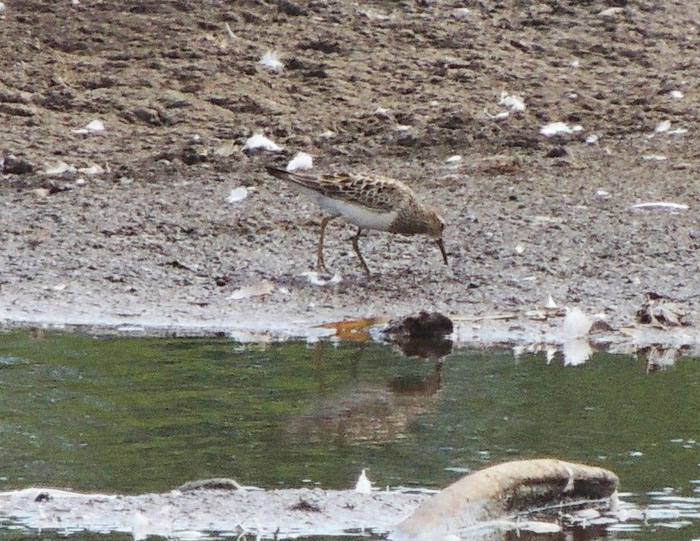
There was also a scatter of Red-necked Phalaropes - at Snettisham, Norfolk to 16th, two at Tacumshin, Wexford on 10th and one on Unst, Shetland on 12th. Unusually for August, a Grey Phalarope was at Frampton Marsh, Lincolnshire on 15th. Finally, two Dotterel were reported from Weybourne Camp, Norfolk on 16th.
The only rare gull of the week was the adult Bonaparte’s Gull still at Faversham, Kent to at least 15th. There were no reports, however, of the Northumberland bird.
Caspian Gulls continued to put on a good show with some even higher counts this week, notably up to eight at Walberswick and five at Great Livermere, both Suffolk and three at Stanwick Gravel Pits, Northamptonshire. The most northerly was once again at Flamborough Head, Yorkshire - the now regularly returning Polish bird.
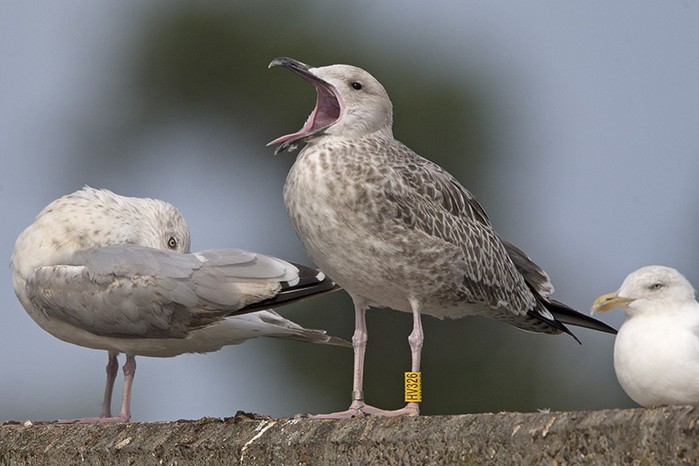
Less typical of the season were single Glaucous Gulls at Abbeytown, Sligo and Spey Bay, Moray on 10th and Cleggan, Galway and Ullapool, Highland on 15th and an Iceland Gull at Lunan Bay, Argyll on 14th.
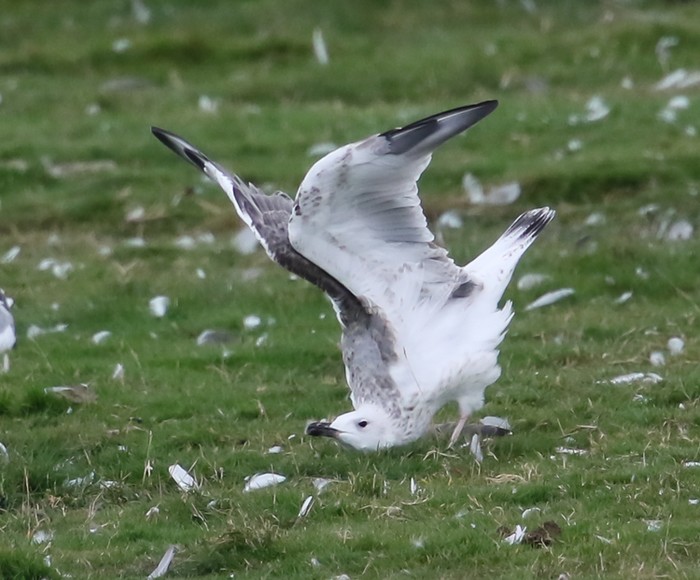
Roseate Terns were at Hill Head, Hampshire on 10th to 14th with two present on 12th, at Blackhall Rocks, Durham on 12th and Gullane Point and Scoughall (two), both Lothian, on 13th. On 14th two were at Whitburn and four at South Shields, both Durham, and one was at Titchfield Haven, Hampshire.
A flock of three Bee-eaters was reported over Fareham, Hampshire on 14th and one was heard over Walberswick, Suffolk on 16th. This was not a great week for true passerines, however. For the first six days of the period, apart from the Hampshire Aquatic Warbler, there were only the following - an Icterine Warbler on Great Saltee, Wexford on 14th and, on 15th, a Wryneck briefly at Port of Felixstowe, Suffolk and an Icterine Warbler on Fair Isle, Shetland. Things finally picked up a little on 16th, however, with a shift in the weather and the autumn’s first Greenish Warblers - at Gibraltar Point, Lincolnshire, Winterton, Norfolk and Flamborough Head, Yorkshire. An Icterine Warbler was at Cley, Norfolk. Away from the east coast, a Melodious Warbler was at Portland, Dorset, a Wryneck at Ynys Dinas, Pembrokeshire and an Icterine Warbler on St. Mary’s, Isles of Scilly.
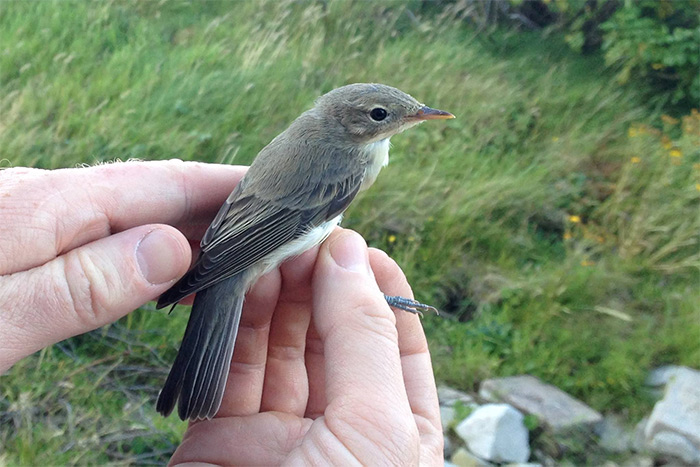
More passerines seem likely in the coming week. The first half of the new week promises an easterly airflow to eastern Britain and, presumably, a scatter of drift migrants. Think more Greenish and Icterine Warblers but also Aquatic Warbler and Citrine Wagtail. And what about a Paddyfield or a Sykes’s Warbler? Out west, however, things look a little different. The southerly (soon to be westerly) flow which is already producing American waders (and a Royal Tern) looks set to remain in place whilst a developing area of low pressure looks likely to deepen as it moves in with the potential for some strong winds and seabird action. With luck, next week could signal the first full flowering of autumn and a rich mixture of birds from multiple directions….
Andy Stoddart
17 August 2016
Please note: we put a lot of time and effort into sourcing and and producing the images, videos and graphics for each roundup. Some of you (probably Apple users) may notice some photos etc. that appear to have incorrect captions. Please try refreshing the page as they are correcty captioned. If after a refresh they are still showing the incorrect captions then please email us
Contributors websites













